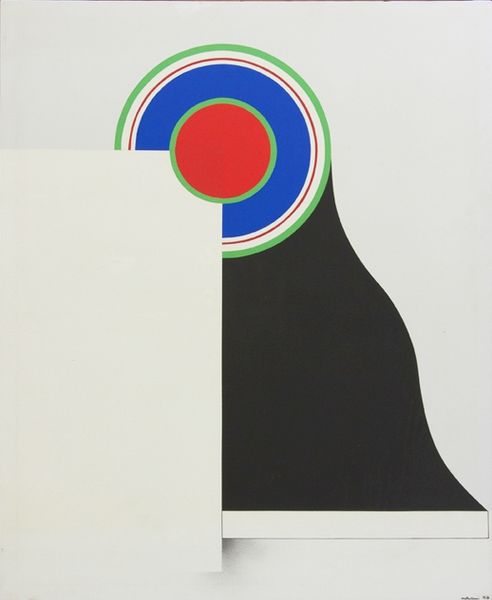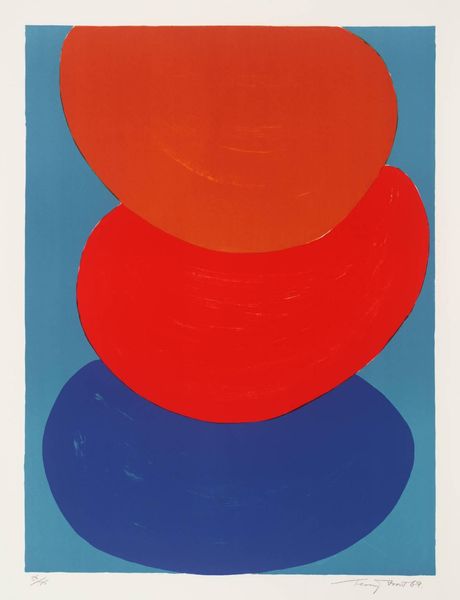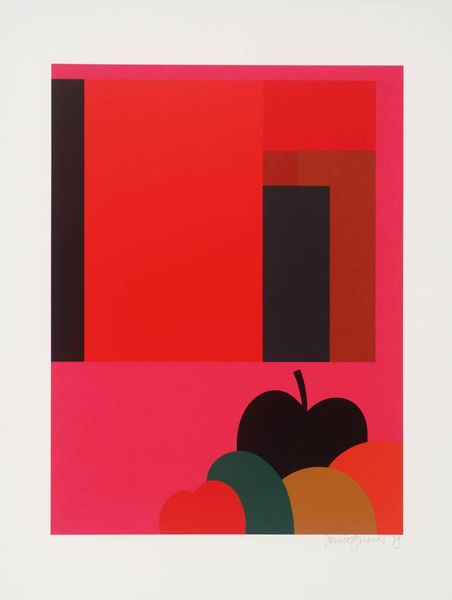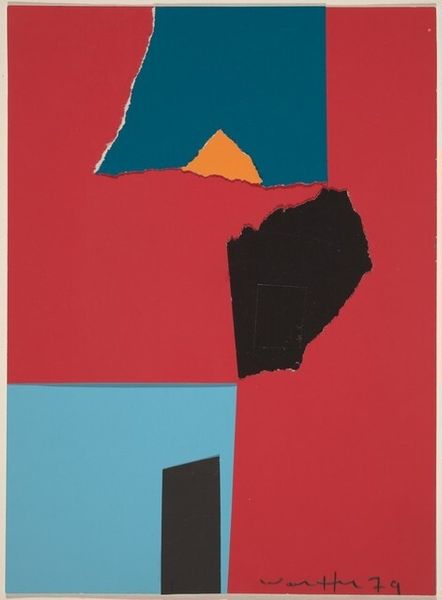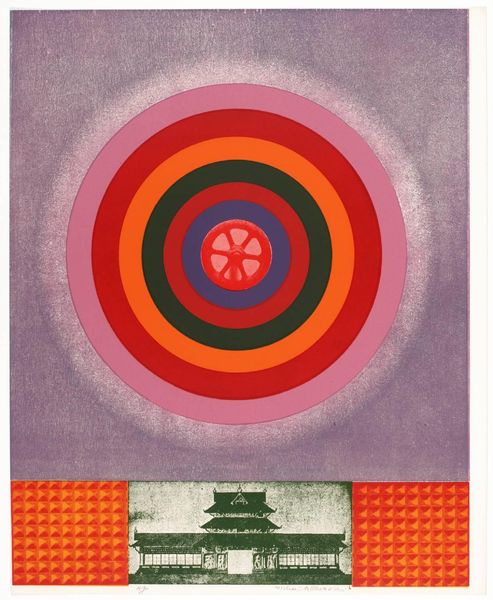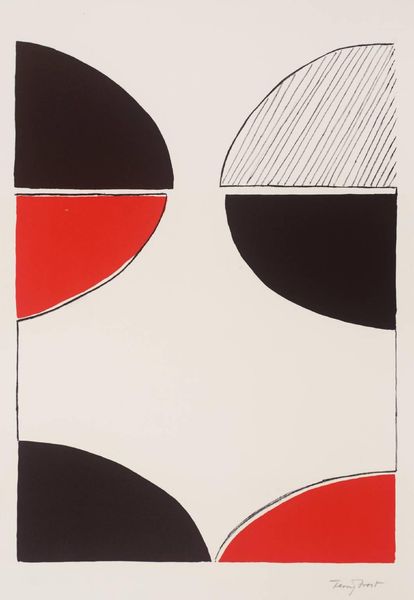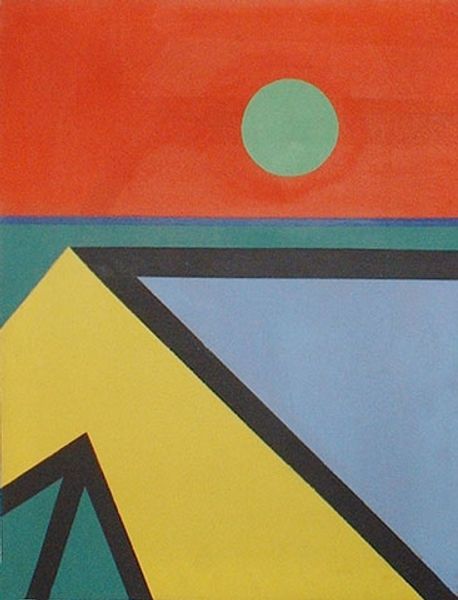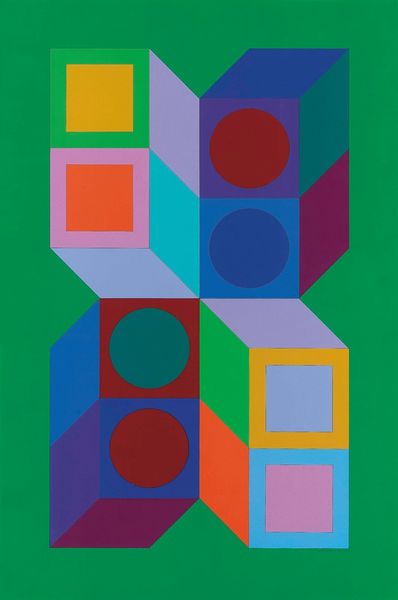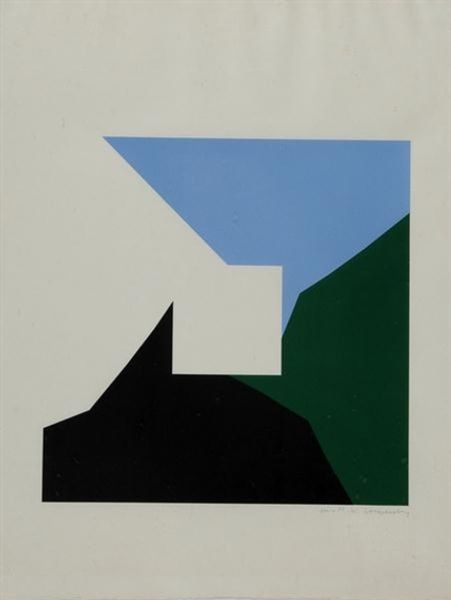
Copyright: Clarence Holbrook Carter,Fair Use
Curator: Clarence Holbrook Carter created this enigmatic print, "The Watcher," in 1977. It presents a striking combination of geometric shapes and surreal imagery. Editor: My first thought is how unsettling and yet peaceful it feels. The colors are calming, like a faded memory, but the single eye staring out throws everything off balance. Curator: That tension is precisely where the work finds its power. Carter, associated with modernism and pop art, was deeply engaged with exploring the subconscious and societal anxieties of the era. We might consider the rise of surveillance culture alongside philosophical ponderings related to the Self. Editor: The geometry almost feels like a stage set, or a minimalist building. Is that eye supposed to be watching the structure, or is the structure itself watching us? It's like the building is wearing the mask, which really flips things around in my mind. Curator: The ambiguity certainly lends itself to varied interpretations. Looking at the geometric forms, one can easily trace influences from minimalism; yet the single eye is suggestive of figurative traditions and alludes to an uncanny, even oppressive power dynamic. One could draw parallels to political discussions, where the watched are surveilled by unseen state powers, echoing the cultural climate during the cold war era and potential for personal intrusion. Editor: And yet, there's also something kind of playful about it, maybe because of the palette? Like a surreal children's book illustration that took a wrong turn. I mean the pop-art really shows. It doesn’t scream paranoia, just a sort of gentle unease that makes you question what's normal. I bet my kid would think this was super funny! Curator: It’s this combination of formalism, and representational fragment that challenges us, positioning 'The Watcher' in dialogue with modernist visual codes and surrealist symbolism. We must explore the anxieties prevalent during that time and situate this unique piece in relation to broader trends within conceptual practices that grapple with the nature of being watched. Editor: "The Watcher"... after this chat, I will definitely give Clarence Holbrook Carter more thought. Curator: Indeed, reflecting on Clarence Holbrook Carter's "The Watcher," we gain further appreciation for the complex ways in which personal expression can weave narratives within broader cultural and political landscapes.
Comments
No comments
Be the first to comment and join the conversation on the ultimate creative platform.
